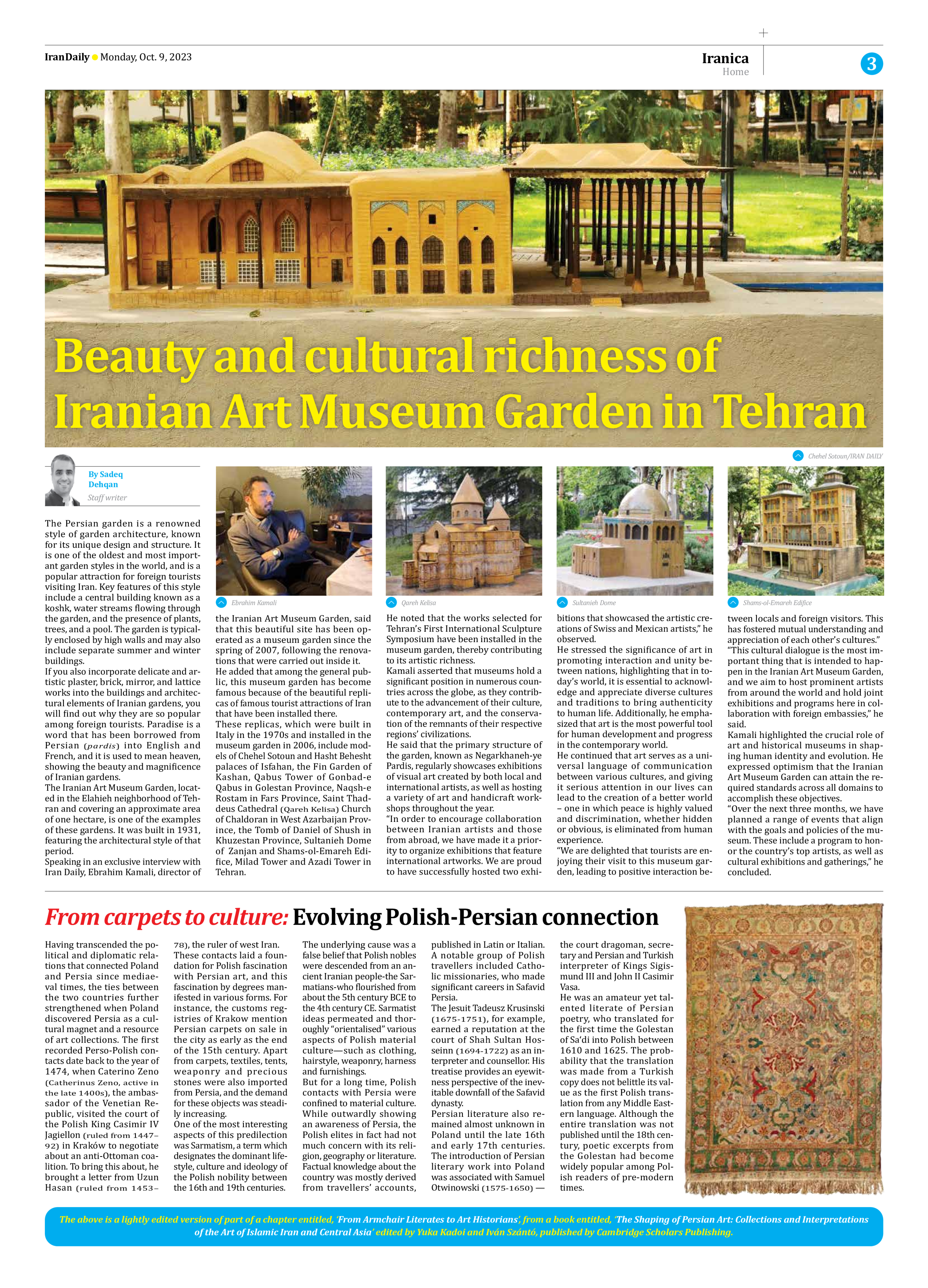
From carpets to culture: Evolving Polish-Persian connection
Having transcended the political and diplomatic relations that connected Poland and Persia since mediaeval times, the ties between the two countries further strengthened when Poland discovered Persia as a cultural magnet and a resource of art collections. The first recorded Perso-Polish contacts date back to the year of 1474, when Caterino Zeno (Catherinus Zeno, active in the late 1400s), the ambassador of the Venetian Republic, visited the court of the Polish King Casimir IV Jagiellon (ruled from 1447–92) in Kraków to negotiate about an anti-Ottoman coalition. To bring this about, he brought a letter from Uzun Hasan (ruled from 1453–78), the ruler of west Iran.
These contacts laid a foundation for Polish fascination with Persian art, and this fascination by degrees manifested in various forms. For instance, the customs registries of Krakow mention Persian carpets on sale in the city as early as the end of the 15th century. Apart from carpets, textiles, tents, weaponry and precious stones were also imported from Persia, and the demand for these objects was steadily increasing.
One of the most interesting aspects of this predilection was Sarmatism, a term which designates the dominant lifestyle, culture and ideology of the Polish nobility between the 16th and 19th centuries.
The underlying cause was a false belief that Polish nobles were descended from an ancient Iranian people-the Sarmatians-who flourished from about the 5th century BCE to the 4th century CE. Sarmatist ideas permeated and thoroughly “orientalised” various aspects of Polish material culture—such as clothing, hairstyle, weaponry, harness and furnishings.
But for a long time, Polish contacts with Persia were confined to material culture. While outwardly showing an awareness of Persia, the Polish elites in fact had not much concern with its religion, geography or literature. Factual knowledge about the country was mostly derived from travellers’ accounts, published in Latin or Italian. A notable group of Polish travellers included Catholic missionaries, who made significant careers in Safavid Persia.
The Jesuit Tadeusz Krusinski (1675-1751), for example, earned a reputation at the court of Shah Sultan Hosseinn (1694-1722) as an interpreter and counsellor. His treatise provides an eyewitness perspective of the inevitable downfall of the Safavid dynasty.
Persian literature also remained almost unknown in Poland until the late 16th and early 17th centuries. The introduction of Persian literary work into Poland was associated with Samuel Otwinowski (1575-1650) — the court dragoman, secretary and Persian and Turkish interpreter of Kings Sigismund III and John II Casimir Vasa.
He was an amateur yet talented literate of Persian poetry, who translated for the first time the Golestan of Sa‘di into Polish between 1610 and 1625. The probability that the translation was made from a Turkish copy does not belittle its value as the first Polish translation from any Middle Eastern language. Although the entire translation was not published until the 18th century, poetic excerpts from the Golestan had become widely popular among Polish readers of pre-modern times.
The above is a lightly edited version of part of a chapter entitled, ‘From Armchair Literates to Art Historians’, from a book entitled, ‘The Shaping of Persian Art: Collections and Interpretations of the Art of Islamic Iran and Central Asia’ edited by Yuka Kadoi and Iván Szántó, published by Cambridge Scholars Publishing.







